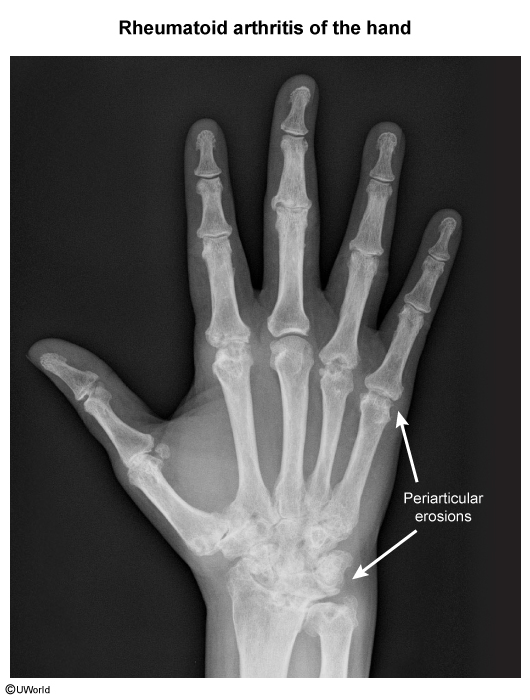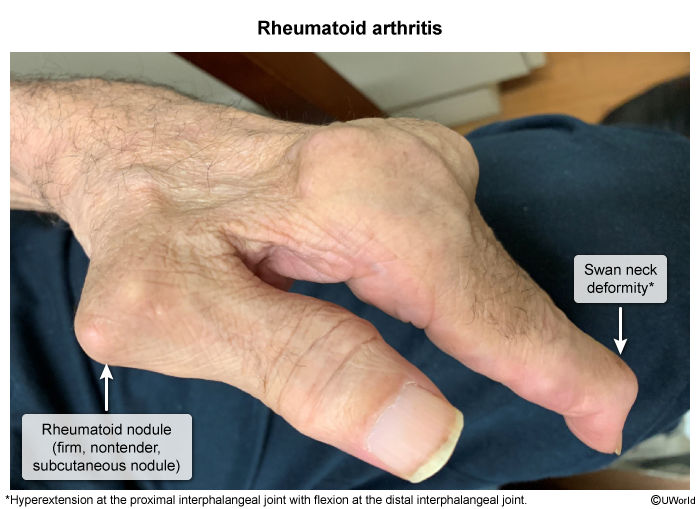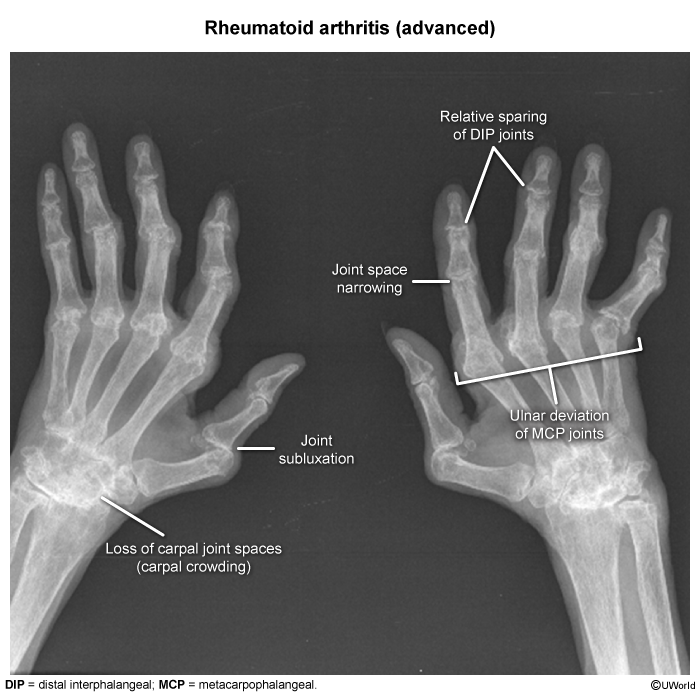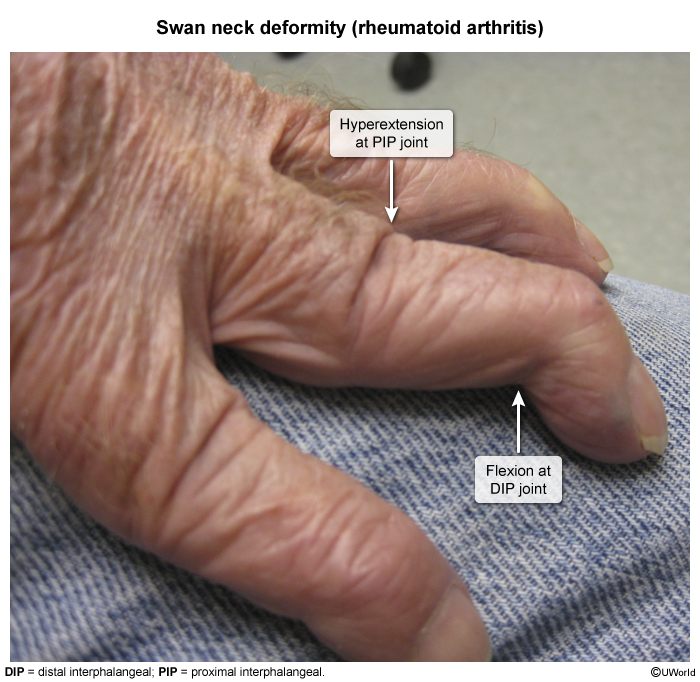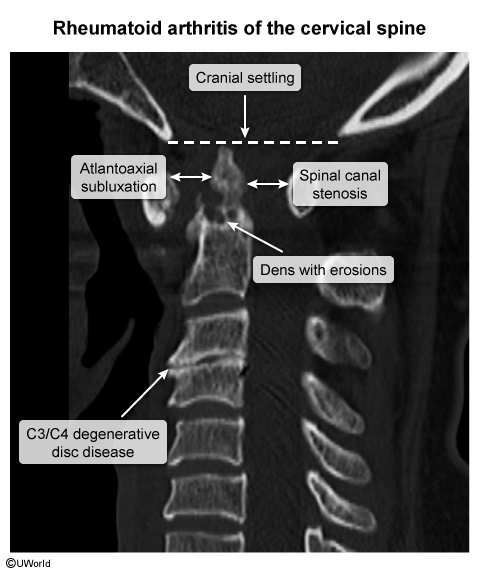Rheumatoid Arthritis
Article Sections
Introduction
Rheumatoid arthritis (RA) is a chronic, systemic autoimmune disorder characterized by chronic, systemic inflammation and cytokine production. Joint manifestations include synovitis, cartilaginous and bony erosion within synovial joints, and associated deformity. Chronic systemic inflammation also is the driver for numerous extraarticular complications. Key principles in management include early disease recognition and initiation of disease-modifying treatment aimed at inducing remission or preventing irreversible joint damage and complications.
Pathophysiology
The pathogenesis of RA involves environmental triggers superimposed with inherent genetic susceptibility (eg, HLA-DR alleles). Initial abnormalities in immune function appear to precede disease diagnosis by several years. The autoimmune response directed against synovial tissues stems from alterations in innate, humoral, and cell-mediated immune activity, as described below.
Citrullination of proteins → B cell activationContinue Learning with UWorld
Get the full Rheumatoid Arthritis article plus rich visuals, real-world cases, and in-depth insights from medical experts, all available through the UWorld Medical Library.
Images
